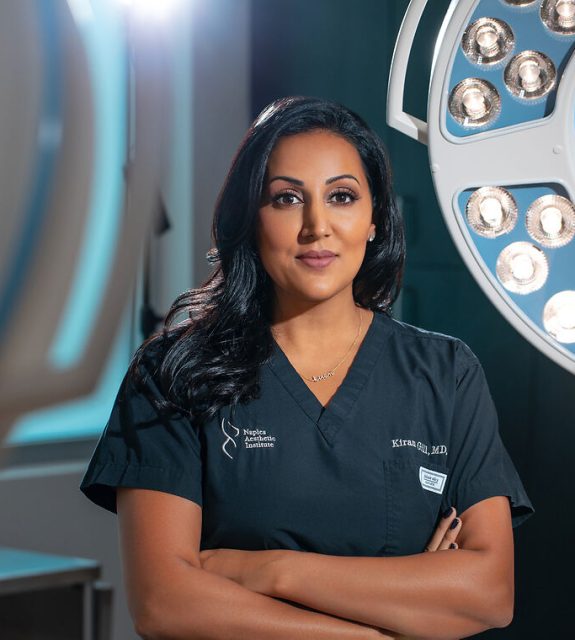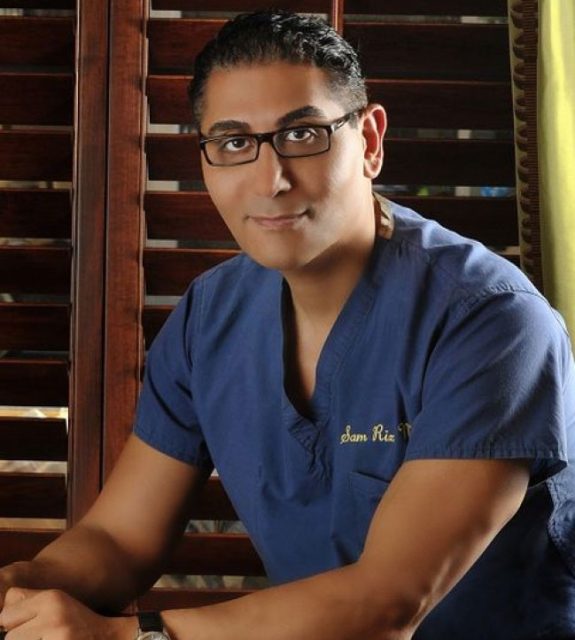Considering hair restoration can be both exciting and daunting. The key to achieving the best results lies in being well-informed and prepared. As you embark on this journey, asking the right questions and seeking expert advice is crucial. To help you navigate this process, we’ve compiled four essential questions to discuss with your surgeon, complete with insights from Dr. Anderson, a renowned expert in the field. These questions and answers will guide you in making informed decisions and setting realistic expectations for your hair restoration procedure.
1. How do I know which method of hair restoration is right for me? FUT or FUE?
Before deciding on the best hair restoration for you, it's essential to understand the different techniques available to achieve your ideal results that address your specific needs. Hair restoration procedures are generally categorized based on the method of hair follicle extraction. The two primary methods are Follicular Unit Transplantation (FUT) and Follicular Unit Extraction (FUE). Each technique has its unique process, benefits, and suitability depending on individual circumstances. By understanding these methods, you can make a more informed decision about which procedure aligns best with your goals and expectations.
Follicular Unit Transplantation (FUT)
The FUT method of hair restoration involves removing a strip of scalp from the donor area and dissecting it into individual follicular units for transplantation. "This method is often chosen for patients who require a large number of grafts," explains Dr. Anderson. "The advantage of FUT is that it can yield a high number of grafts in a single session, making it suitable for extensive hair loss."
The FUT procedure typically involves the following steps:
- Donor Area Preparation: The donor area at the back of the scalp is trimmed.
- Strip Removal: A strip of scalp is removed from the donor area and the wound is sutured closed.
- Dissection: The strip is dissected into individual follicular units.
- Transplantation: These individual hair follicles are transplanted into the areas of need.
Follicular Unit Extraction (FUE)
The FUE method of hair restoration involves extracting individual hair follicles directly from the donor area. "FUE is the least invasive method and leaves minimal scarring," notes Dr. Anderson. "It is ideal for patients who prefer to wear their hair short or those who want to avoid a linear scar."
The FUE procedure includes these steps:
- Donor Area Preparation: The donor area is shaved to allow access to individual follicles.
- Extraction: Individual hair follicles are extracted using a specialized punch tool.
- Transplantation: The extracted follicles are trimmed, and then implanted into the thinning or balding areas.
"Choosing the right hair restoration method depends on factors like the extent of your hair loss, hair type, donor hair availability, and your personal preferences," says Dr. Anderson. "During the consultation, we evaluate these factors and discuss the pros and cons of each method to help you make an informed decision."
2. How do we decide what my new hairline should look like?
Deciding on the shape, angle, and placement of your new hairline is one of the most exciting parts of any hair restoration and one that will impact your overall appearance. The final design is a combination of what you as the patient want, what your donor area can provide, and the artistic capabilities of your surgeon.
Patient Input
Patient involvement is crucial in the hairline design process. "We encourage patients to share their preferences and expectations so we can be sure that everyone is on the same page," says Dr. Anderson. "By collaborating with the patient, we can ensure the design meets their aesthetic goals, while also setting reasonable expectations about what is possible."
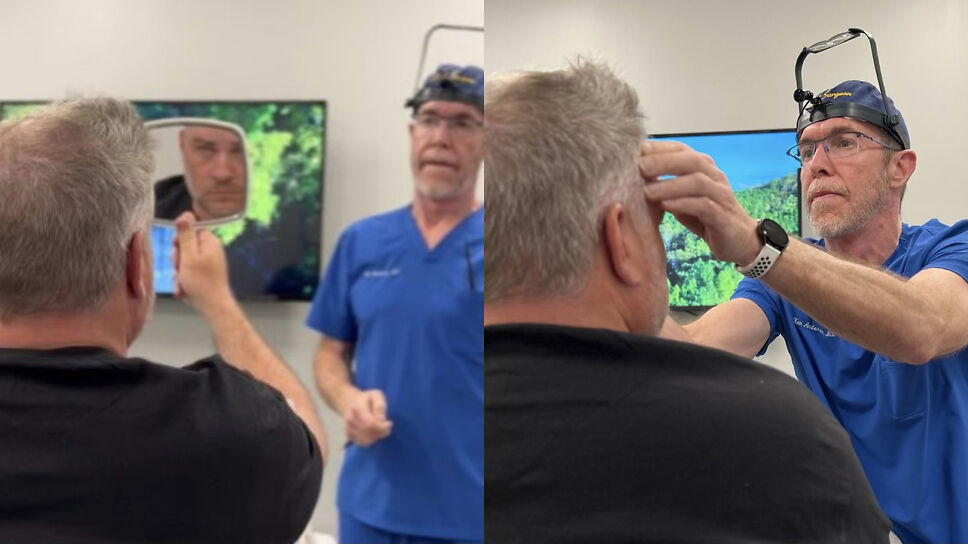 Photo Credit: Courtesy of The Anderson Center for Hair
Photo Credit: Courtesy of The Anderson Center for Hair
Consultation
"During your hair restoration consultation, we’ll conduct a detailed examination of your scalp and facial structure," explains Dr. Anderson. "We consider factors such as the shape and size of your head and face, your age, and your personal preferences to design a hairline that complements your natural features."
(WATCH: What to Expect at the Anderson Center for Hair on Facebook)
Artistic Considerations
"As a surgeon, I aim to create a hairline that looks like it’s always been there and not as a person put it there. It should also be both age-appropriate and age with you." Dr. Anderson emphasizes. "I do my best to design a flattering hairline with subtle irregularities and varying hair density to mimic and enhance your natural growth patterns. The outcome is a natural hairline that will look great, always."
3. What Are the Expected Results and Recovery Timeline After Hair Restoration Surgery?
Post-op Recovery
Recovery time is surprisingly quick for both FUE and FUT hair restorations, with most patients resuming normal activities within a few days. "Medical recovery happens in a matter of days while the growth of new hair can take several months to get started," Dr. Anderson explains.
Detailed post-operative care instructions are provided to ensure optimal healing and hair growth.
To see a real patient’s photo journal of the recovery process, click here.
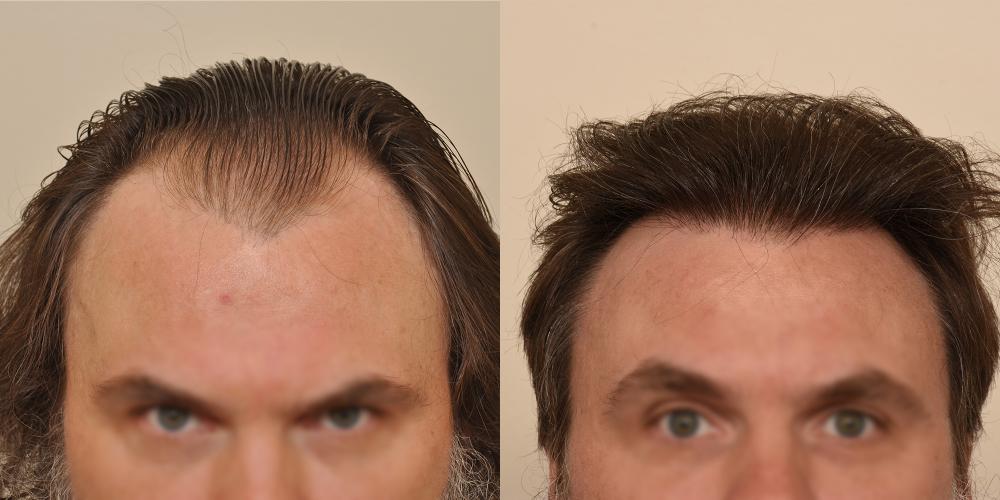 Photo Credit: Courtesy of The Anderson Center for Hair
Photo Credit: Courtesy of The Anderson Center for Hair
Initial Hair Growth
"New hair growth typically starts around three months post-surgery," Dr. Anderson explains. "Keep in mind that hair grows slowly – only about one-half inch per month – and each hair follicle starts regrowing hair on its own timetable, so seeing an appreciable difference as the hair trickles in can sometimes feel disheartening. We take serial 360-degree photographs so that we have an objective view of changes over time. You can call the office at any time during your recovery process and the new growth phase to request a photo appointment and we’ll add the progress to your medical record. "
During the initial growth phase, you can expect:
- Hair Shedding: “About two to three weeks after surgery, the transplanted hair will begin to fall out. This is a normal part of the process, so don’t be alarmed.” Dr. Anderson says, comfortingly. “The newly implanted follicle sheds its hair so a new hair can grow in its place.”
- New Hair Growth: New growth should start to be visible within a few months. Most people will see 60% of new hair growth after six to nine months.
Final Results
"Fully-grown results are seen in 12 to 18 months," Dr. Anderson adds. "Patients can expect natural-looking results with significant hair density improvement." To see examples of Dr. Anderson’s hair restoration procedures at the Anderson Center for Hair, check out this before and after results gallery.
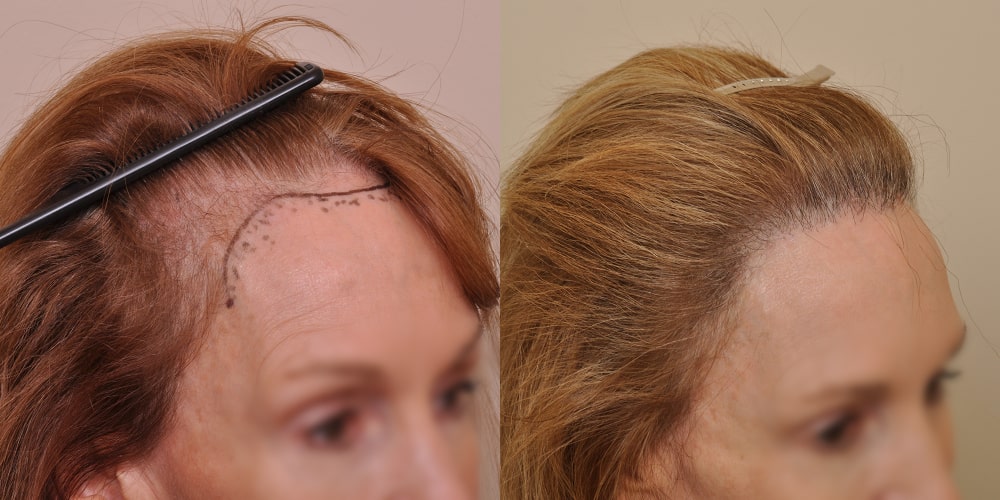 Photo Credit: Courtesy of The Anderson Center for Hair
Photo Credit: Courtesy of The Anderson Center for Hair
4. How do I maximize and maintain my surgical results?
“Ongoing maintenance is the key to long-term happiness with your hair restoration results.” Dr. Anderson explains, emphasizing that this is one of the most important things for hair restoration patients to understand. He continues, “The hairs implanted during a hair restoration surgery are permanent. These hairs will grow thick and strong forever in properly selected candidates thanks to the concept of donor dominance. However, the overall look achieved from your surgery may change over time due to continued miniaturization of the other hairs in the same area.” He continues, “This is why it’s so important to treat the root cause of your hair loss. Even with the permanent hair implanted during surgery, preserving the hair you do still have is crucial. Using hair loss prevention tools and therapies can help you maintain the density and fullness achieved through hair restoration surgery.”
Maintaining the results of your hair restoration involves ongoing care and potentially supplementary treatments. Dr. Anderson recommends several strategies to maximize and sustain hair growth:
- Medical Therapies: Starting or continuing the use of topical treatments like minoxidil and oral medications such as finasteride can help maintain your natural hair and enhance your surgical results. Studies show these treatments can prevent further loss and even improve the hair you already have.
- Low-Level Laser Therapy (LLLT): This non-invasive treatment, also sometimes called photobiomodulation, uses light to stimulate hair follicles and improve hair density. It's an excellent option for ongoing maintenance post-surgery. Take a deep dive into LLLT here.
- Platelet-Rich Plasma (PRP): Periodic PRP treatments can rejuvenate hair follicles and promote sustained growth. Dr. Anderson notes, "PRP is a natural way to boost hair health by harnessing growth factors from your own blood."
- Nutritional Supplements: Ensuring adequate intake of vitamins and minerals that support hair health, such as biotin, zinc, and vitamin D, can also be beneficial.
Undergoing hair restoration is a significant decision, and having all your questions answered before proceeding is crucial. A consultation with a qualified surgeon will help you understand the process, set realistic expectations, and ensure you choose the best treatment plan for your needs. Dr. Anderson and his team at the Anderson Center for Hair are committed to providing personalized care and achieving the best possible results for their patients.
For more information about the Anderson Center for Hair and Dr. Anderson, visit www.AtlantaHairSurgeon.com or call 404-256-HAIR (4247).
For more information, visit The Anderson Center for Hair's social media:
















